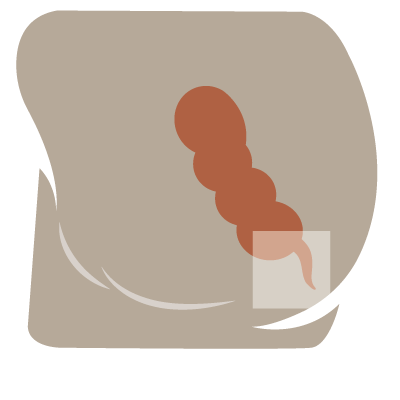Fecal Incontinence
Bowel or fecal incontinence is the inability to control a stool until a socially acceptable time. This condition ranges in degree of severity and affects approximately 7% of the population. It is more common in women and occurs in a wide age range. There are a variety of treatments for fecal incontinence. Unfortunately, due to embarrassment or lack of information, many people fail to seek help. UT Physicians Colon and Rectal Surgeons have a special interest in fecal incontinence and strives to provide our patients with the latest treatment options. One of the advanced procedures offered for more severe cases is the use of Interstim® Therapy (also known as Sacral Nerve Stimulation).
In Office Diagnostic Options
Pelvic Floor Testing (Anal Manometry) – Since there are many causes of fecal incontinence, it is essential to determine the cause and severity through careful history taking, physical examination, and specialized testing called pelvic floor testing, which may include anal manometry, rectal sensation, pudendal nerve testing, and anal ultrasound. UT Physicians Colon and Rectal Clinic Physicians utilize this group of minimally invasive tests to help determine sensation in the anal canal or rectum, measure the pressures of the anal sphincter muscles, and test for nerve damage.
Fecal Incontinence Non-Surgical Treatments
Bowel Evacuation Programs – Education on lifestyle changes that may help lessen bowel accidents include fiber supplements, suppositories, nutrition recommendations, and antidiarrheal medications if indicated.
Physical Therapy and Biofeedback – Non-invasive management of fecal incontinence can include biofeedback therapy and pelvic floor retraining with specialized pelvic floor physical therapists to help strengthen the anal sphincter muscles and improve bowel control.
Fecal Incontinence Surgical Treatments
Sacral Neuromodulation (InterStim® and Axonics®) – This is one of the most leading-edge technologies available for the treatment of fecal incontinence. Originally developed for treating urinary incontinence and frequency, Sacral Neuromodulation has also been proven to significantly help those suffering from bowel incontinence by gently stimulating the nerves that control the bowel to help restore more normal control. The procedure is done as an outpatient procedure in two phases.
The first phase allows the patient to test the therapy for 1-2 weeks. If significant improvement is documented, the second phase for long-term therapy is scheduled.
The Evaluation Phase: To determine if sacral neuromodulation will be an effective therapy, a short testing period is required in which a small wire is placed under the skin near the tailbone during an outpatient procedure. This wire is connected to an external trial stimulator (worn temporarily near the lower back or hip) and sends mild electrical pulses to the nerves that help control bowel function. Patients are asked to document daily symptoms on a bowel diary to determine if enough improvement is experienced to move forward with the long-term device.
 Long-Term Therapy: If the patient and the physician determine that enough improvement was successfully observed and documented during the evaluation phase, they are candidates for long-term therapy. During the second outpatient procedure, a small implantable device (“pacemaker”) will be placed just beneath the skin in the upper part of the buttock. The device will send mild stimulation to the pelvic nerves that assist in the communication between the brain and the muscles and nerves that control bowel function. The stimulation can be controlled and adjusted with the use of a small patient remote control.
Long-Term Therapy: If the patient and the physician determine that enough improvement was successfully observed and documented during the evaluation phase, they are candidates for long-term therapy. During the second outpatient procedure, a small implantable device (“pacemaker”) will be placed just beneath the skin in the upper part of the buttock. The device will send mild stimulation to the pelvic nerves that assist in the communication between the brain and the muscles and nerves that control bowel function. The stimulation can be controlled and adjusted with the use of a small patient remote control.
Sphincteroplasty – A majority of patients with fecal incontinence have a separation of their anal sphincter muscle due to prior child birthing or prior surgery. These patients are candidates for an anal sphincter repair. Typically, patients are in the hospital for several days after surgery, with a post-operatively recovery period of 2-4 weeks. Good outcomes with fewer bowel accidents are obtained in this select patient population.